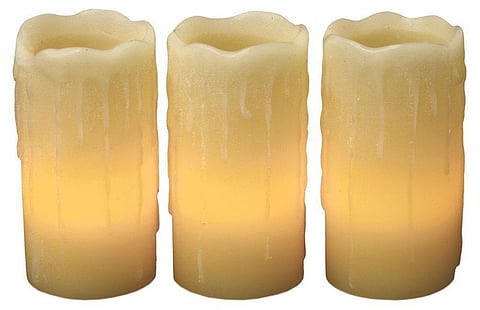
- Home
- न्यूजग्राम
- NewsGram USA
- India
- World
- Politics
- Entertainment
- Culture
- Lifestyle
- Economy
- Sports
- Sp. Coverage
- Misc.
- NewsGram Exclusive
- Jobs / Internships

Hyderabad, Oct 8 Burning a candle could be all that it takes to make an inexpensive but powerful electric car battery, researchers from the Indian Institute of Technology in Hyderabad have found.
The research revealed that candle soot could be used to power the kind of lithium-ion battery that is used in plug-in hybrid electric cars.
"We are very excited about the results. This new approach is very easy and the costs involved are minimal — it would make battery production cheaper," said Chandra Sharma, one of the study authors.
Sharma estimated that one hybrid car would need ten kg of carbon soot, which would be deposited in about an hour using candles.
Their discovery opens up the possibilities of using carbon in more powerful batteries, driving down the cost of portable power.
Lithium-ion batteries power many devices, from smartphones and digital cameras all the way up to cars and even aircraft.
The batteries work by having two electrically-charged materials suspended in a liquid to produce a current.
Carbon is used as one of those materials in smaller batteries, but for bigger, more powerful batteries — such as those used in electric cars — carbon is not suitable because of its structure, which cannot produce the required current density.
In the new study, Sharma and Manohar Kakunuri found that because of the shape and configuration of the tiny carbon nanoparticles, the carbon in candle soot is suitable for use in bigger batteries.
What is more, because the soot could be produced quickly and easily, it is a scalable approach to making batteries.
When a candle burns, it gives off clouds of black soot made of carbon.
The researchers looked at the soot collected from the tip of a candle flame and from the middle of the flame and compared the size, shape and structure of the carbon.
The results showed that the burning process forms nanoparticles of carbon that are 30-40 nanometres across and are joined together in an interconnected network.
They also found that the soot recovered from the tip of a candle flame, which burns at 1400 degrees Celsius, has fewer impurities like wax, making it perform better as an electrical conductor.
In tests, the researchers found the soot effective as a conducting material in a battery.
The researchers now plan to develop a candle soot battery to test the technology further.
The findings appeared in the journal Electrochimica Acta.
(IANS)
